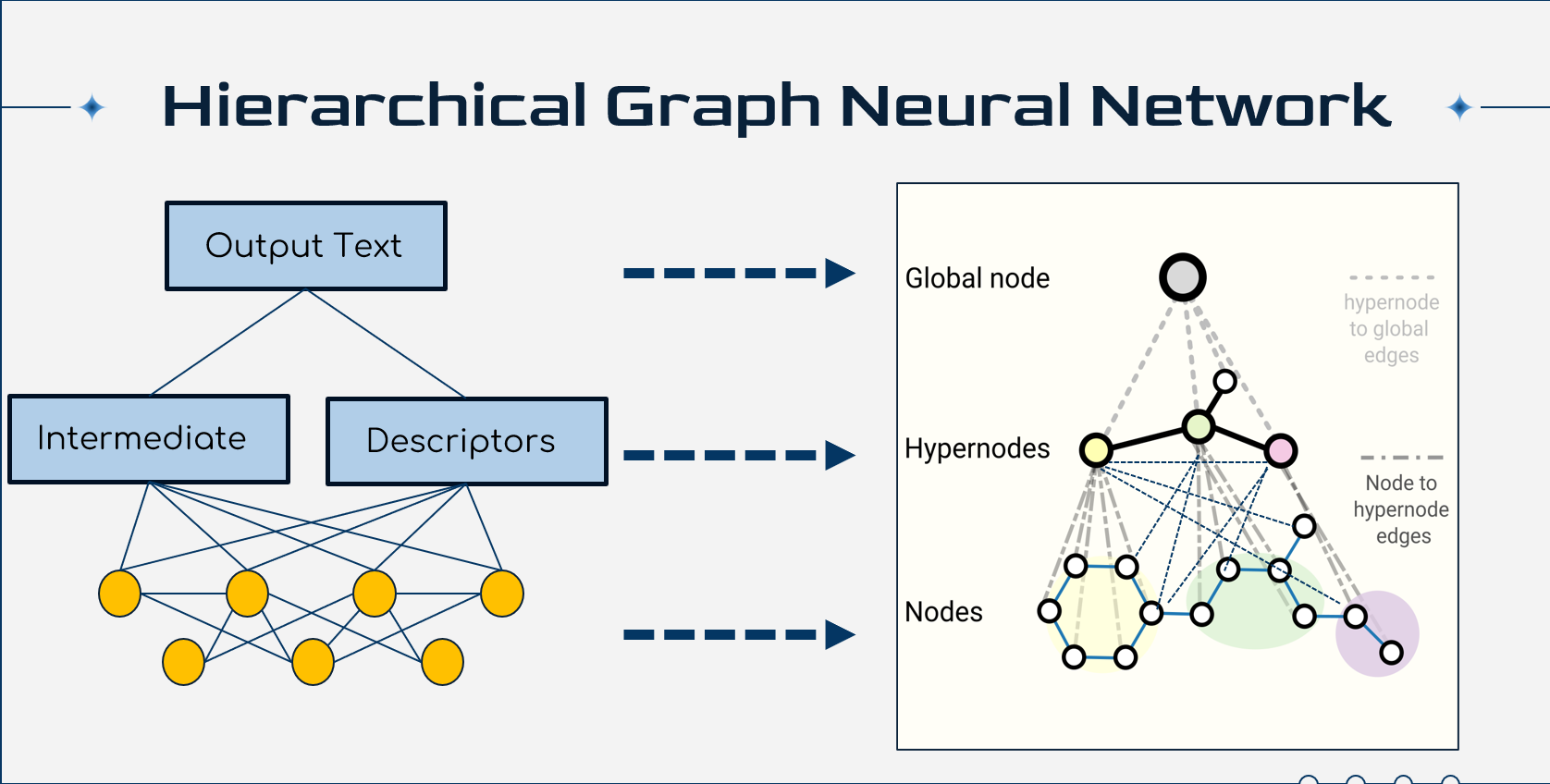Applying Hierarchical Graph Neural Networks for Dynamic Prediction of Reading Comprehension
NSF GRFP Research Proposal

Overview
This NSF GRFP research proposal focuses on developing advanced computational models for reading comprehension using hierarchical graph neural networks (GNNs). The project aims to create dynamic prediction systems that can model and predict reading comprehension processes in real-time, with applications in education and cognitive science.
Research Objectives
Create hierarchical GNN architectures for modeling reading comprehension processes.
Develop real-time prediction systems for reading comprehension outcomes.
Apply the model to improve reading instruction and assessment methods.
Research Plan
The research plan outlines a comprehensive approach to developing advanced computational models for reading comprehension using hierarchical graph neural networks. The project combines theoretical insights from cognitive science with cutting-edge machine learning techniques.
Proposed Timeline
- Months 1-3: Literature review and theoretical framework development
- Months 4-6: Dataset collection and preprocessing pipeline development
- Months 7-9: Initial model architecture design and implementation
- Months 10-12: Baseline model training and evaluation
- Months 1-3: Hierarchical architecture refinement
- Months 4-6: Advanced training techniques implementation
- Months 7-9: Comprehensive model evaluation
- Months 10-12: Performance optimization and documentation
- Months 1-3: Educational tool development
- Months 4-6: Field testing and user feedback collection
- Months 7-9: Research paper preparation and submission
- Months 10-12: Conference presentations and knowledge transfer
Potential Challenges
- Complexity of hierarchical graph neural network implementation
- Scalability issues with large-scale text processing
- Integration of cognitive science principles into machine learning models
Mitigation Strategies:
- Modular architecture design for easier debugging and optimization
- Progressive scaling approach starting with smaller datasets
- Regular consultation with cognitive science experts
- Limited availability of annotated reading comprehension datasets
- Diversity in reading materials and comprehension levels
- Ethical considerations in data collection and usage
Mitigation Strategies:
- Development of custom annotation tools and protocols
- Collaboration with educational institutions for diverse data
- Strict adherence to ethical guidelines and IRB protocols
- Integration with existing educational technology systems
- User interface design for non-technical users
- Real-time performance requirements
Mitigation Strategies:
- Early engagement with potential users and stakeholders
- Iterative design and testing process
- Performance optimization and caching strategies
Broader Impacts
Development of advanced tools for improving reading comprehension and learning outcomes:
- Personalized reading assistance for students
- Teacher support tools for comprehension assessment
- Adaptive learning systems based on cognitive models
Advancements in both artificial intelligence and cognitive science:
- New insights into human reading comprehension processes
- Development of novel machine learning architectures
- Bridging the gap between cognitive theory and computational models
Contributions to education and technology accessibility:
- Improved literacy tools for diverse populations
- Enhanced educational technology for underserved communities
- Promotion of STEM education through innovative applications
Research Impact
This research has the potential to significantly advance our understanding of both artificial intelligence and human cognition. The developed models will provide insights into how humans process and remember information while reading, with applications in educational technology, reading assistance tools, and cognitive science research.
Key Contributions
Development of hierarchical graph neural networks for reading comprehension modeling.
New understanding of memory processes during reading comprehension.
Creation of tools for analyzing and improving reading comprehension in educational settings.